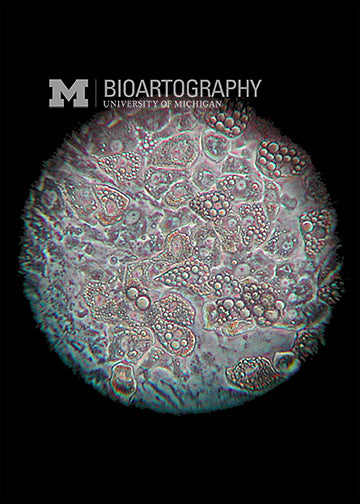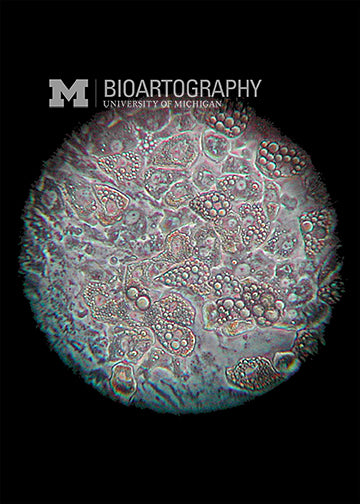

Brian Cha, Graduate Student (MacDougald Laboratory), Department of Molecular and Integrative Physiology, University of Michigan Medical School
Nobody likes to think that their body contains fat cells (called adipocytes), but these cells represent an important storehouse of energy and critical regulators of energy balance. Pictured is a microscope image of many adipocytes, loaded with their characteristic spherical lipid/fat droplets containing triglycerides. These cells become enlarged as they store more lipid and they shrink when fat depots are low. During starvation or heavy exercise, an enzyme called lipase, released from the pancreas and stomach, converts these lipid droplets into fatty acids and glycerol, energy-rich compounds needed by the body. Adipocytes also make several hormones that are important for metabolism. Perhaps counterintuitively, adipocytes protect the body from obesity, by producing hormones that stimulate fat breakdown as well as energy use by muscles, without increasing appetite. Thus, adipocytes can be important allies in the fight against diabetes and cardiovascular disease.



